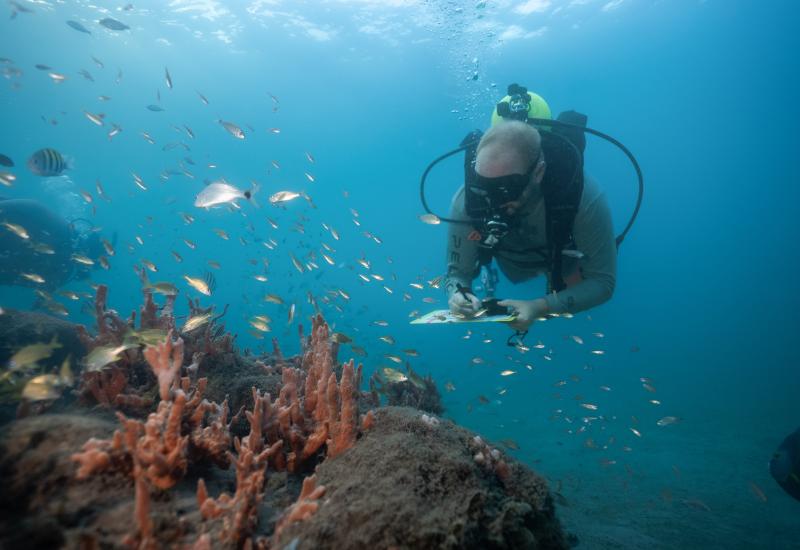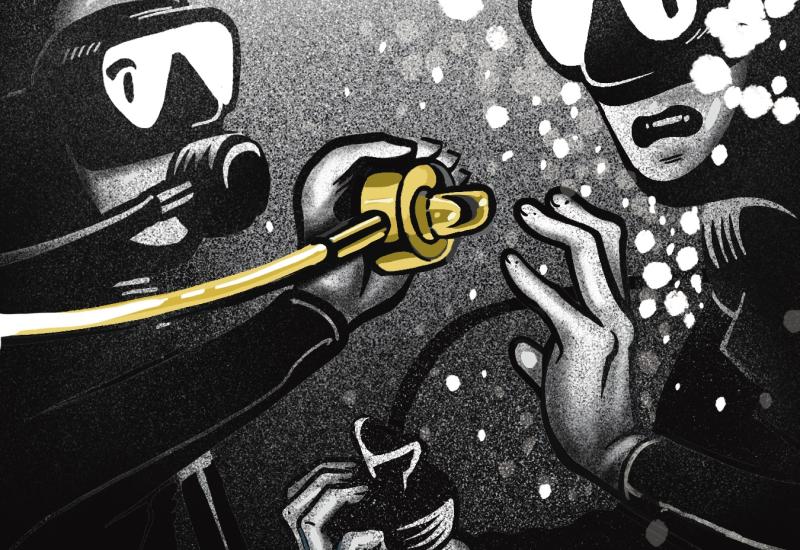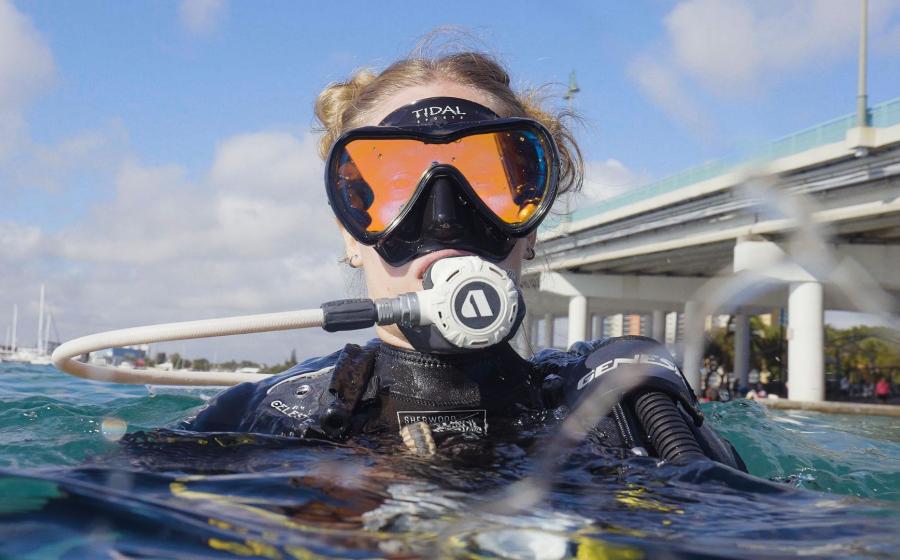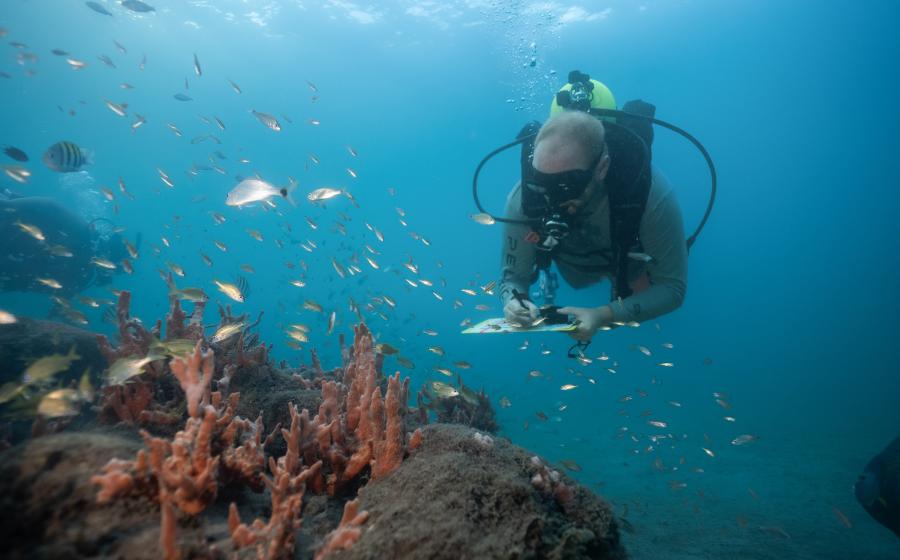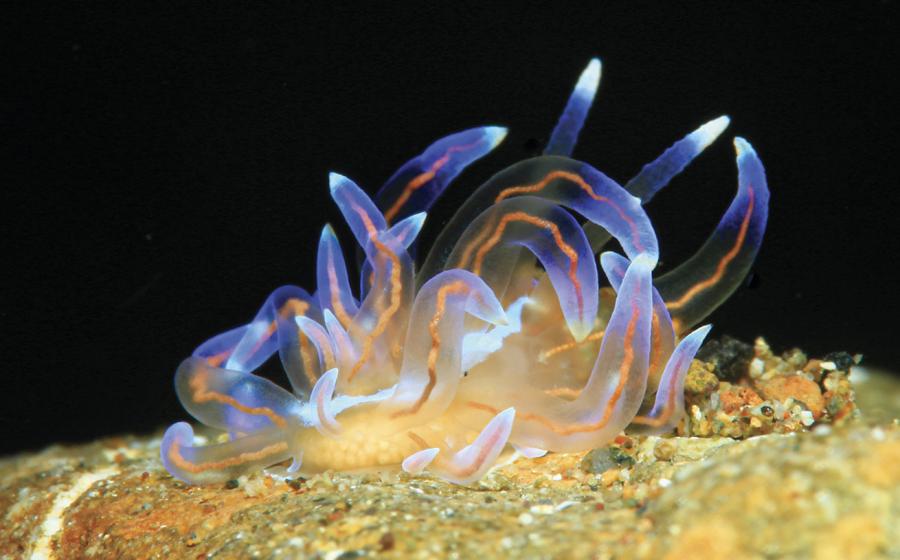Manual vs. Electronic Closed Circuit Rebreathers: Which One Is Right for You?

Florian AllgaeuerJay finishing up a dive on his O2ptima CM eCCR. If you look close at his mask you can see the reflection of the heads-up display (HUD) for helping monitor PPO2.
One of the big decisions when shopping for your first rebreather is whether you’d prefer a manual closed-circuit rebreather (mCCR) or an electronic closed-circuit rebreather (eCCR). In general, the primary difference is that one relies on electronics. Okay, that was easy! Right?
Surprisingly, it’s not that simple. But before we understand the differences between manual and electronic closed-circuit rebreathers, note that this article is not meant as an end-all decision-maker. Instead, it is a starting point for understanding the two different systems. Before deciding, you should always research and talk with rebreather instructors and experienced CCR divers to determine which option best suits you and your diving goals.
Related Reading: My Introduction to Diving a Rebreather
Manual Closed-Circuit Rebreathers (mCCR)
Manual CCR units, (sometimes called mechanical closed-circuit rebreathers), are based on the principle that humans metabolize a fixed amount of oxygen while breathing is relatively fixed in ideal conditions. If all other factors remain the same, such as the activity level, body temperature and so on, the amount changes little, no matter the depth you are underwater. In other words, if we are doing a relaxed swim at 40 or 120 feet, our bodies metabolize the same amount of oxygen. MCCR systems deliver oxygen to the breathing loop to match what your body is metabolizing.
This can be achieved in several ways. One is a steady stream of oxygen from a Constant Mass Flow orifice, with the diver able to add oxygen via a manual add valve (MAV) to maintain a predetermined, desired partial pressure of oxygen (ppO2) called the setpoint throughout the dive. For example, as we ascend, the ppO2 in the breathing loop will naturally drop as ambient pressure lessens.
To maintain the setpoint, divers press a button to add oxygen to the loop via the MAV as needed. The beauty of mCCRs is that they are relatively simple mechanical machines with fewer potential failure points. Because divers manually control the system, this essentially forces them to constantly monitor their ppO2—which could help lower the potential for complacency.
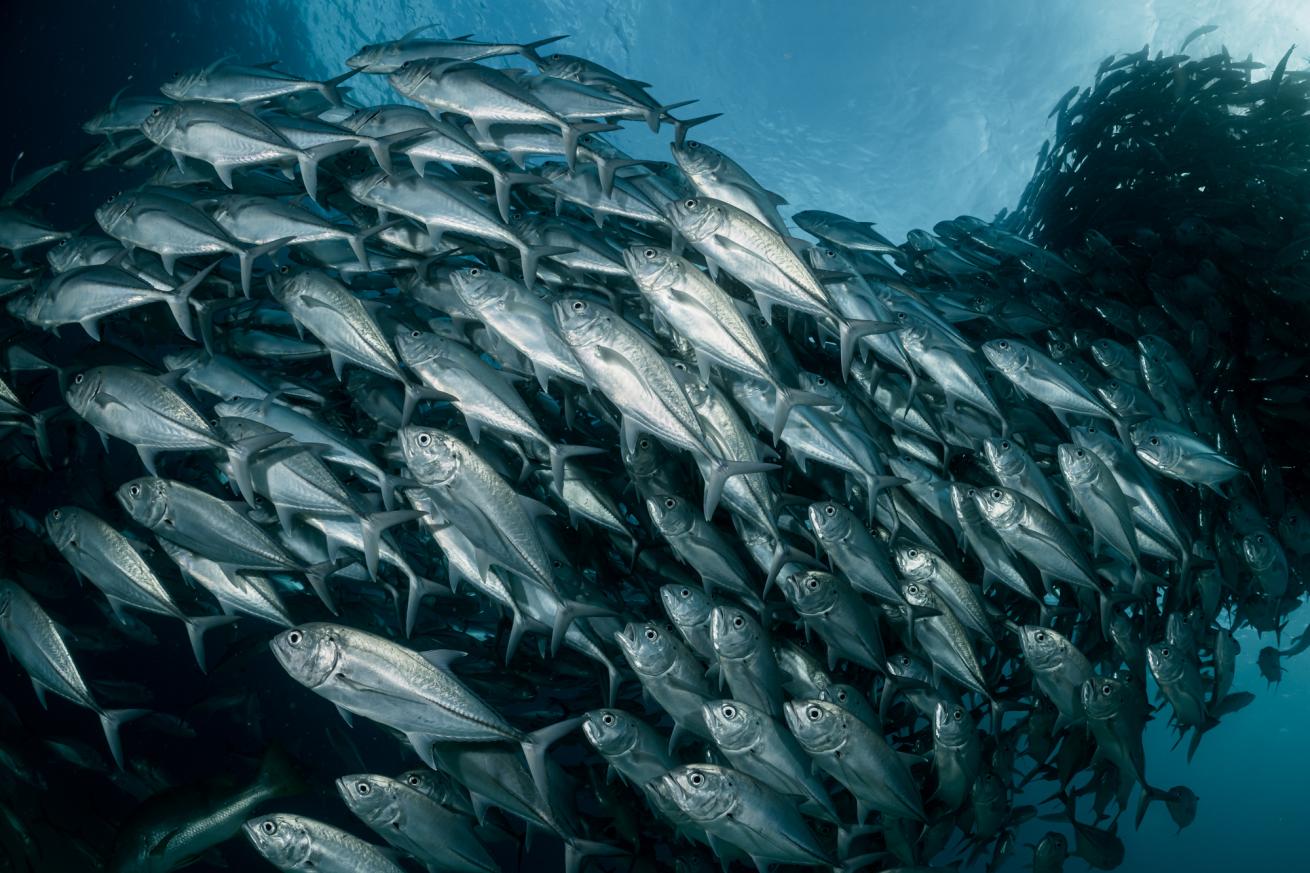
Jay ClueGetting up close and personal with a giant school of jacks while a diving closed-circuit rebreather.
Electronic Closed-Circuit Rebreathers (eCCRs)
In contrast, ECCRs utilize a computer that reads oxygen sensor data then electronically adds oxygen to maintain the setpoint. Think of it like cruise control on a car: You set your desired setpoint, and the system works to maintain it. However, just like your car, you cannot sit back and nap. An eCCR must be monitored just as closely as an mCCR.
One of the most essential principles of rebreather diving is knowing your ppO2 at all times—and it should always be near (some variation is normal) your setpoint (typically ppO2 1.2 or 1.3).
While this might sound daunting to those unfamiliar with rebreathers, features such as a heads-up display (HUD) make this task simple. The HUD shows your current ppO2 readout for all sensors and is always in view—often attached to the breathing loop.
Although you must still monitor the system, the rebreather does most of the work maintaining your setpoint. So, eCCRs provide some convenience but, this introduces slightly more complex technology and more potential failure points, depending on the unit’s design.
Your training on an eCCR, therefore, includes how to handle such failures by "flying manually." Having learned this, some experienced rebreather divers run their eCCRs manually, giving them more control. A common practice is to set the eCCR for a slightly lower ppO2 setpoint and then manually add oxygen throughout the dive to maintain the desired setpoint. The electronics act as a backup if they become distracted or otherwise cannot manually maintain setpoint.
Related Reading: How to Choose Between Rebreather Styles
Conclusion
Both are great systems, and it really comes down to which will work better for you. After a lot of thought and testing out both types, I decided to go with eCCR. To understand my decision, it helps to know what my rebreather goals were from the beginning. As many of you know, I am a commercial photographer and cinematographer. Having the ability to be completely silent underwater, therefore opening up new opportunities to experience marine wildlife on camera, was the driving force for getting into rebreather diving.
Filming underwater comes with increased task loading; I’m diving the rebreather, managing my camera and thinking of compositions simultaneously. The thought of having a system to help me better manage some of that task loading sounded like a significant benefit.
Plus, if my background in cave and technical diving has taught me anything, it is that humans are usually the weakest link in any system or plan, with errors or procedure violations the most common causes of dive incidents.
Research shows that humans make three to six errors per hour daily. Begging one to wonder how our human error rate compares to electronics. A quote Jakub Šimánek of Divesoft wrote stuck with me when doing my initial research on mCCR vs eCCRs: “Machines can’t think, and we can’t do that for them. We have to think for ourselves, but we can entrust straightforward calculations to computers. They are much better at it than we are.”
Now, does this mean an eCCR is better than mCCR? Not at all. They’re both solid systems that offer different features that can adapt to various types of diving. So there isn’t a bad choice. What you choose will come down to which will better help you accomplish your goals.

Cecilia Mar RuizPortrait of Jay Clue.
About Jay Clue
Exploring Rebreathers is a column following Jay’s journey into the world of CCR diving, sharing the best tips and info he has learned along the way. Jay Clue is an accomplished photographer, educator, and conservationist. He’s an experienced technical diver and instructor with over 6000 dives in all sorts of environments, from the cold waters of the North Sea to the beautiful caves of Mexico and exploring the open oceans in search of epic encounters with marine megafauna. His passion for marine conservation led him to the world of photography and storytelling in hopes of bringing the beauty of our planet's waterways to more people around the globe. Follow him at @jayclue on Facebook and Instagram, where he’s always happy to answer your questions and chat about diving.

